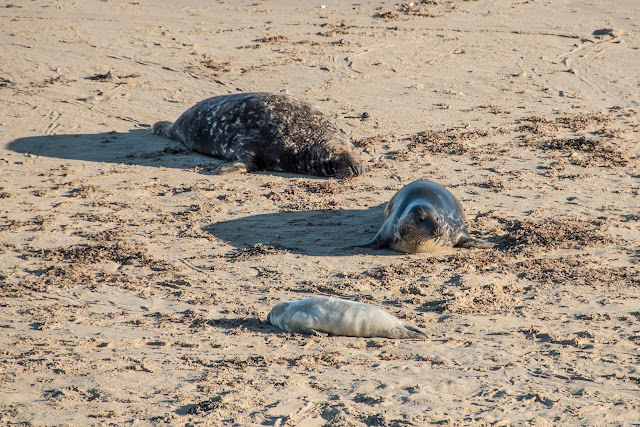The seals at Horsey

A record number of grey seal births at a Norfolk beach shows a "major change" in behaviour as the animals become used to humans, marine experts have said. The 1.5 mile (2.4km) stretch of dunes at Horsey has hosted 1,018 births so far this winter compared to the previous winter when there were 804. (BBC report) We had been here on a previous visit but decided we would like to see them again. It is a worthwhile trip if you have never seen them. Mother rushing to protect her pup (and herself probably) from approaching bull. Keep away from my pup please! Mothers defending their space by putting herself between the bull and her calf. Mothers and pups, a joy to watch The big males just kept pestering the females, in or out of the water Grey seals have grey and brown fur, sometimes with a pattern of blotches; no ears visible; long muzzle; nostrils parallel; larger and darker than common seal, with flat or convex profile to its head...
